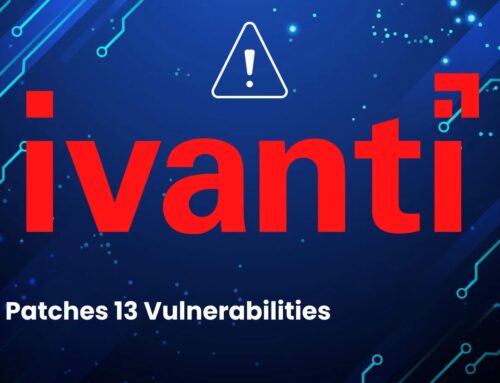
Rockwell Arena Simulation Vulnerabilities Let Attackers Execute Malicious Code Remotely
Urgent Cybersecurity Alert: Critical Vulnerabilities Discovered in Rockwell Arena Simulation Software
Organizations worldwide relying on Rockwell Automation’s Arena Simulation software face a significant and immediate cybersecurity threat. Recently disclosed critical memory corruption vulnerabilities could allow malicious actors to achieve remote code execution (RCE) on affected systems, posing a severe risk to operational integrity and data security. This poses a direct challenge to the safety and reliability of simulated environments, which are often integral to critical infrastructure, manufacturing, and process control systems.
Understanding the Rockwell Arena Simulation Vulnerabilities
Rockwell Automation has issued a crucial disclosure regarding three high-severity memory corruption vulnerabilities within its Arena Simulation software. These flaws collectively enable threat actors to execute arbitrary code remotely, gaining unauthorized control over vulnerable systems. The implications of such an exploit are far-reaching, from data exfiltration and system disruption to the manipulation of simulation outcomes, which could lead to real-world operational errors.
CVE Details and Impact Assessment
The identified vulnerabilities are:
These vulnerabilities are critical, each carrying a high CVSS 4.0 base score of 8.4. This score reflects the severe potential impact and ease of exploit. All versions of Arena Simulation software 16.20.09 and prior are affected. The memory corruption flaws could be triggered through specially crafted input, leading to a denial-of-service condition or, more critically, remote code execution. An attacker leveraging these vulnerabilities could gain complete control over the system running the software, compromising sensitive data, intellectual property, and potentially disrupting critical business operations that rely on accurate simulations.
Mechanisms of Exploitation
Memory corruption vulnerabilities typically arise from programming errors where an application attempts to access memory it shouldn’t, or writes data beyond allocated boundaries. In the context of remote code execution, an attacker crafts malicious input that, when processed by the vulnerable software, overwrites critical areas of memory. This can lead to the injection and execution of arbitrary code, bypassing security controls and allowing the attacker to run commands with the privileges of the affected application.
Remediation Actions for Rockwell Arena Simulation Users
Immediate action is required to mitigate the risk posed by these critical vulnerabilities. Rockwell Automation has provided guidance, and it is imperative that all users of Arena Simulation software implement the following remediation steps:
- Update Your Software: The primary mitigation is to upgrade to the patched version of Rockwell Arena Simulation software as soon as it becomes available. Consult Rockwell Automation’s official security advisories for specific patch release details and upgrade instructions. Do not delay this crucial step.
- Isolate Affected Systems: If immediate patching is not feasible, isolate systems running Arena Simulation software from the internet and critical internal networks. Implement strict network segmentation to limit potential lateral movement by an attacker.
- Implement Least Privilege: Ensure that the Arena Simulation software, and the user accounts running it, operate with the absolute minimum necessary privileges. This limits the potential damage an attacker could cause if they successfully exploit a vulnerability.
- Network Monitoring: Enhance network monitoring for unusual traffic patterns originating from or destined for systems running Arena Simulation. Look for signs of unauthorized access attempts, unusual data transfers, or unexpected process executions.
- Regular Backups: Maintain regular, secure, and isolated backups of all critical data and system configurations. This ensures business continuity and facilitates recovery in the event of a successful exploitation.
- Review Simulation Data Integrity: Post-patching, consider verifying the integrity of critical simulation models and results to ensure they haven’t been tampered with prior to applying the fix.
Tools for Vulnerability Management and Network Security
Effective cybersecurity posture requires a combination of robust tools for detection, scanning, and mitigation:
| Tool Name | Purpose | Link |
|---|---|---|
| Vulnerability Scanners (e.g., Nessus, OpenVAS) | Identify known vulnerabilities in software and network infrastructure. | Tenable Nessus / OpenVAS |
| Intrusion Detection Systems (IDS/IPS) | Monitor network traffic for suspicious activity and block malicious connections. | Snort / Palo Alto Networks IPS |
| Endpoint Detection and Response (EDR) | Detect and respond to threats on endpoint devices, including memory corruption attempts. | CrowdStrike Falcon Insight / Microsoft Defender for Endpoint |
| Security Information and Event Management (SIEM) | Aggregate and analyze security logs from various sources to detect security incidents. | Splunk Enterprise Security / IBM QRadar |
Conclusion: Prioritizing Software Security
The discovery of these critical vulnerabilities in Rockwell Arena Simulation software underscores the ongoing importance of diligent software update management and proactive cybersecurity practices. For organizations utilizing this software, immediate action to patch or mitigate is not merely recommended, but essential to safeguard critical operations and prevent potential remote code execution by threat actors. Staying informed through official vendor advisories and maintaining a robust vulnerability management program are fundamental to defending against evolving cyber threats.





